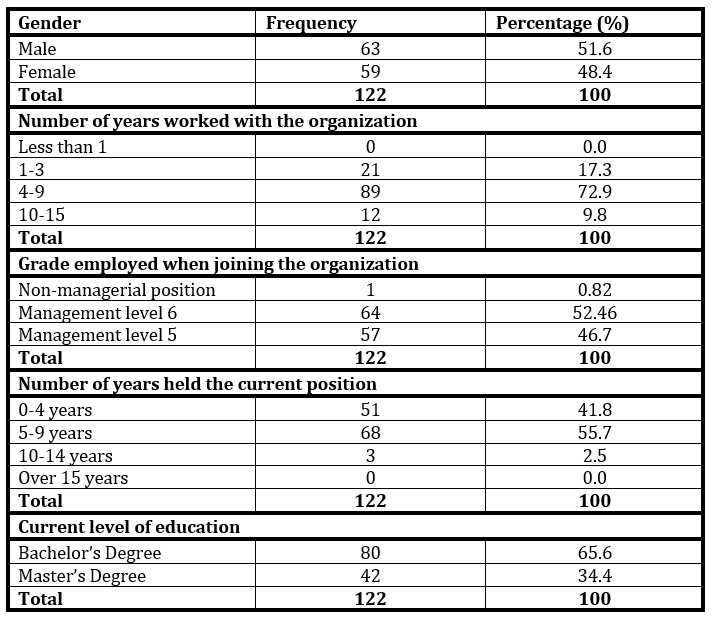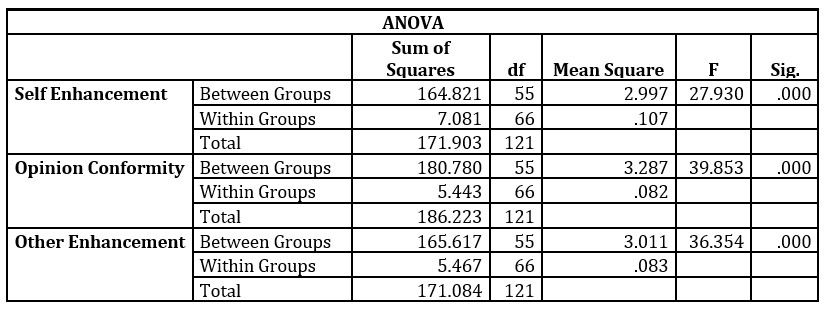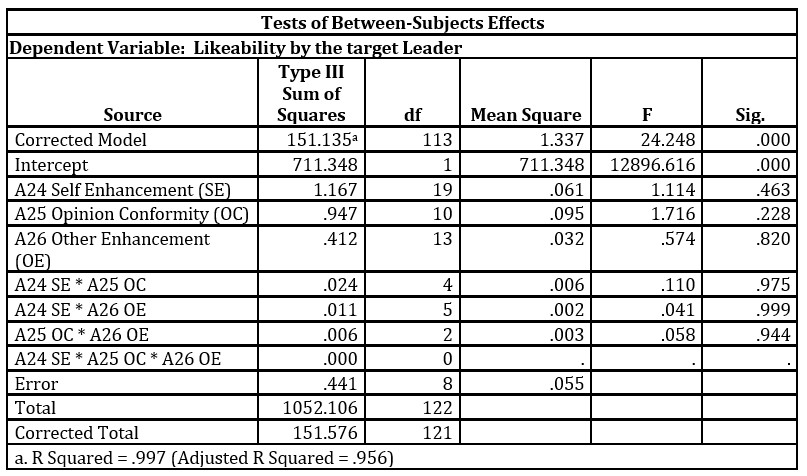Introduction
Studies have shown that some employees who prospered in organizations were not essentially the best ones but those who were skillful at pleasing their bosses (Twalib, 2017). Possibly the basic aspect associated to effective ingratiation is the approach used specifically to increase likeability. Researchers including, Linden and Mitchell (1988) posited that ingratiation strategy rests on a person’s perception of risks involved with the tactic. However, research is not clear on what strategy is better to achieve the intended objective. Jones (1964) describes ingratiation as deliberate actions illicitly intended to impact a particular other regarding the appeal of an individual’s personal capabilities. Ingratiation can be expressed from, dramatized howls of enthusiasm for the superior’s new idea, twofaced comments about the superior’s looks, bragging about one’s experiences and networks, to disingenuous taps on the back. Jones (1964) has not in his writings proposed any of the tactics of ingratiation to be better than the other. Therefore, leaving an ingratiator in limbo, experimenting which one will work. This makes it a risky affair for the ingratiator in case it backfires.
Corporate executives commonly use these tactics for similar motive used ages ago (by the serpent in the Garden of Eden) to acquire the desired outcomes. Incidences of ingratiatory behaviors are more in the higher echelons of organization (Allen, Madison, Porter, Renwick, & Mayes, 1979). These executives are the ones at a higher risk of losing their jobs if the wrong dimension of ingratiation is used, therefore, necessitates research on which ones among the dimensions of ingratiation are a sure deal. In a vertical dyad kind of relationship at any level, leaders practice less ingratiation than their followers (Porter, Allen, & Angle, 1981). This is because leaders usually hold a number of formally endorsed powers, hence lowers the need to use ingratiation to their juniors. Followers, on the other hand, find ways besides those that are formally endorsed by the organization (hard work) to lure leaders to reward them (Kerr, 1975).
Linden and Mitchell (1988) suggested that conscious selection of an ingratiation approach depends on the person’s assessment of the risk involved. The level of the alleged risk is evaluated on the reason for the usage of ingratiation and supposed gain/loss, the insight of the target’s predisposition to an ingratiation effort and the evaluation of situational determinants to the usage of ingratiation. They suggest that the more apparent risk it is likely that a fairly nonaggressive ingratiation tactic like a confession or self-depreciation can be used. On the other hand, the less the perceived risk, the more chance that a fairly aggressive tactic like straight flattery or offering immense favors will be employed. This study was not specific on the type of ingratiation tactic to be used and missed out on some of the tactics including opinion conformity. The study did not consider the type of the target person. This really counts on what tactic to be used.
Jones (1964) categorized these scheming tactics into three groups: self-presentation, opinion conformity, and other-enhancement. Opinion conformity entails expressing preferences that support the view of a target individual; self-presentation is a way of self-glorification; other-enhancement involves flattering. Past studies (Linden and Mitchell, 1988, Steven, Mitchell and Tripp, 1987) done on the dimensions of ingratiation indicate that these strategies have an impact on the target’s reaction. This study contributes to literature by taking a stand on what strategy of ingratiation appears to be more favorable and if all the strategies applied together will yield more results to the target than using individual dimensions at one go. Literature has left many questions to be answered by both the ingratiator and the target person. The dilemma includes: which among the dimensions of ingratiation would be more effective? Does timing matter in applying these tactics? What about the target person? Should these strategies apply one at a time? How about a cocktail of these strategies? In trying to find answers to these questions, this paper, therefore, embarked on answering the ingratiators’ dilemma.
Literature Review and Hypothesis Development
Literature on ingratiation and the dimensions of ingratiation has been done quite extensively. None, based on the authors knowledge has been bold enough to advise the ingratiator on which one will work best. The study is pinned on the social exchange theory that signifies relationships are driven by the goodness of results they expect to obtain (Nakonezny and Denton, 2008). The support that one receives from a relationship, is anticipated to cause inequity in the relationship between the parties. Consequently, the players will try to maintain balance between the support received and the effort extended (Randall et al 1999). This means that when one of the parties get support, they will tend to respond in order to fulfill his/her feeling of indebtedness by showing positive work conducts. However, this theory is not specific on what tactics to be used in order to ensure positive outcomes. This study will contribute to this theory by adding more information on it.
Ingratiation as a concept has gained popularity mostly in the western countries. Considering the differences in terms of cultural background, limited resources experienced in the African context make this study a significant contribution in the continent. It can be used as a comparable study in terms of contextual foundations hence the authors’ decision to venture into this context.
Pandey (1986) posited that ingratiators would probably be appreciated by a target getting straight praises and opinion conformity, other than a spectator observing a conversation of an ingratiator and targeted individual. Goffman’s (1955) was quoted by Pandey (1986) as a role of an observer, an onlooker’s self-image is indirectly involved in the interaction. In those situations, it turns out to be easier to doubt the ingratiators’ rationality of behavior. On the contrary, when a person is outrightly a target, it is hard to continuously query the trustworthiness of the other’s statements and sustain the interaction. The contextual differences between the studies done by Pandey (1986) and Goffman (1955), are what makes a difference in the situation. There is a cultural difference between developing and developed countries that this paper wants to address. This would increase the debate on the issue of context.
Jones and Wortman (1973) stood aware of the level that individuals involve in different types of ingratiatory deeds as a role of instinctive, as contrasting to skillful, dispensation. In social exchange, the feeling of a societal duty to pay back the good deeds of others with alike deeds. In the same way, ingratiation encompasses giving pleasing strokes to the other anticipating they will be indebted to reciprocate them in a way (Vecchio and Appelbaum, 1995). Keller (1996) reviewed studies on “strategic ingratiation” of 40 years which confirmed that kissing up to the boss pays off. Another study done by Twalib and K’Obonyo (2018) affirmed Keller’s (1996) study.
Based on the research of Jones and Wortman (1973), the definite type of ingratiation strategy (opinion conformity, other enhancement, special treatment, self-enhancement and diffidence) was predicted to influence the ingratiation-evaluation relation. Strategies known to give out variation of responses weren’t expected to yield positive assessments compared to other strategies that may less likely be interpreted as a pointer of concealed intentions (i.e., opinion conformity, other enhancement and self-promotion). A person in an organization has to personally choose what ingratiation strategy to use.
Opinion conformity entails a person articulating a view that is in line with the sentiments, decisions, or actions of the targeted person (Jones, 1964). The conformity strategy follows another school of thought: individuals like persons whose morals and beliefs seem to be like their own. The subordinate will criticize the capability of his leader’s peer, since the subordinate recognizes that his superior does not conform with the other leader, typifies this indirect form of flattery (Ralston, 1985). Cialdini et al (1976) established that individuals that deliver convincing appeals impose favorable impressions of targets that reply with opinion conformity, while bystanders of such exchanges adapt a resistance to these convincing appeals. Contrary, to “Yes Men” concept (Prendergast, 1993), that offers a basis for subordinates to agree to bosses’ opinions by saying what the bosses want to hear about subordinates’ efforts, ingratiation by opinion conformity is unlimited to information which outrightly impacts a firms’ profit. Many employees conform tactically to the opinion of supervisors and supervisors recompense workers’ closeness in opinion.
Self-presentation is acting in a way to which a target individual will be fascinated. Self-presentation tactics can be characterized as those used to guard or promote oneself. Defense strategies are short term in nature. Some of the strategies used in defense include apologies and self-disclosure. These are intended to evoke sympathy from the target. Promoting oneself strategy, on the other hand, focuses on long-term goals. They are used for assertive purposes and they use proactive approach rather than reactive approach.
Jones and Wortman (1973) posited that self-presentation strategy has two interconnected traits: providing clear descriptors about one’s own traits and behavior, and behaving in ways that suggest one owns certain traits. Tsang (2015) did a study on Ingratiation, Attractiveness, and Interpretational Relation of Youths and found out that self-presentation and favor rendering have significant influence on interpersonal relation of the youths. This approach involves complimenting bosses or colleagues. Many individuals find it difficult to decline positive gestures of others. Ingratiation typically works when the target is pleased with the source even if the ingratiation effort is obvious and clear (Appelbaum and Hughes 1998).
Other enhancement strategy is an attempt to display desirability to the target person by professing positive stuff to the target, gratifying the target, showing special treatment for the target. It includes articulating good sentiments and assessments of the target person by the ingratiator. The efficacy of such approach comes about when a person perceives that the other is positively inclined to them, they tend to return the favor (Wortman and Linsenmeier, 1997). The approach of other enhancement majors on the premise that people prefer persons that seem to like them. The usage of praise, consent and/or flattery to advance one’s self-worth are all types of other enhancement. Giving favors is frequently taken as a strategy of other enhancement and is grounded on the premise that the target person will feel a sense of responsibility towards the ingratiator, and perceive the individual as a supportive and approachable person. An empirical study done by Kipnis et al (1980) which engaged the use of ingratiation in work situation found that other enhancement was employed by a majority of the respondents in the study. This study brings about the question of time and change. As time goes by human relations, behavior and attitude change. The current study will measure this concept based on the 21st century needs of an employee.
Based on the foregoing, the following hypotheses were developed:
H1a: Self Enhancement, Other Enhancement and Opinion Conformity, individually, have no significant difference when applied to the target leader.
H1b: When applied jointly, Self Enhancement, Other Enhancement and Opinion Conformity have no significant difference on the target leader.
Methodology and Design
Research designs institute an outline for the gathering, measuring and analysing of data (Cooper and Schindler, 2011). This research employed descriptive survey that is cross sectional in nature since the study was done at one point in time. The population of study was 169 respondents. The respondents rated the extent to which they agreed on statements on the different ingratiation dimensions. These were middle management employees of a large manufacturing company in Kenya.
Self-administered structured questionnaires were used to collect primary data. A questionnaire was considered convenient since it could reach many respondents and the respondent had the capacity to read and understand well the items in the questionnaire. The questionnaire used structured statements with 5-point likert type of questions ranging from ‘agree to a very large extent’ to ‘agree to a very less extent’. Descriptive statistics was employed and means and standard deviations were used. One and two-way ANOVA tests were used to test for the first and second hypothesis respectively.
Data Analysis and Discussion
Descriptive Statistics
The assessment of internal consistency was done using Cronbach Alpha. A value equal to or above 0.70 was used as a rule of thumb (Cooper and Schindler, 2011). Researchers’ cohorts in the school of Business were used to validate the questionnaire. Normality test was carried out using Kolmogorov Smirnov test to spot departure from normality due to either skewness or kurtosis or both. All the results in this study were above 0.05 which confirmed normality
Table 1: Respondents Demographics
The study reveals that there is no much difference between the genders both males and females having 51.6% and 48.4% respectively. This implied gender rule and equality is observed in the manufacturing company that this study was conducted on. The study further revealed that 17.3% of the respondents have worked for the organization between 1-3 years, 72.9% of the respondents indicated that they had worked with the organization for a period of between 4-9 years, while 9.8% showed that they had worked for the organization for a period of between 10-15 years. In terms of the level of education, the results revealed that 65.6% of the respondents had a bachelor’s degree and 34.4% had a postgraduate degree mostly Master’s degree. This implies that respondents were well educated.
On being asked about the position the respondent had been employed in, 0.82% of them were employed at non-managerial position, 52.46% were employed at management level 6, while 46.7% of them were employed at management level 5, a position that they are currently holding. 55.7% of the respondents indicated that they had worked in their current position for a period of between 0-4 years, while 41.8% of the respondents indicated that they have been in the current position for a period of between 5-9 years, 2.5% of the respondents have worked in the current position for a period of between 10-15 years.
Inferential Statistics
Hypotheses 1a was tested using one-way anova and the results are presented in Table 2 below. H1a: Self Enhancement, Other Enhancement and Opinion Conformity, individually, have no significant difference when applied to the target leader.
Table 2: Coefficients of the Dimensions of Ingratiation on Increased Likeability by the Target Leader Using One-Way Anova Coefficients

The results in Table 2 indicate that among the three dimensions of ingratiation, ‘Opinion Conformity’ has the highest mean square 3.287. This means that the mean difference is significant with (F 39.853≤0.05). The second dimension of ingratiation is ‘Other Enhancement’ with a mean square of 3.011, (F 36.354, P≤0.05). The last of the three dimensions is ‘Self Enhancement’ with a mean square of 2.997 (F 27.930, P≤0.05). These results, therefore, reject the null hypothesis that, ‘there is no significant difference in the effect of the three dimensions of ingratiation on the likeability of the target leader’. The results clearly show significant mean differences between the dimensions of ingratiation.
The second hypothesis was formulated to test whether the interaction of the dimensions of ingratiation will have more effect on the target leader than when used individually and the results are presented in table 3 below. The hypothesis was stated as:
H1b: When applied jointly, Self Enhancement, Other Enhancement and Opinion Conformity have no significant difference on the target leader.
Table 3: Coefficients of the Effects of Ingratiation Dimensions on the Likeability by the Target Leader Using Two-way Anova

The results in Table 3 above show that there is no significant difference when the dimensions of ingratiation are applied jointly. This is depicted by the low mean square values and the low F values with a p value of ≥ 0.05 as indicated in the table. These results therefore imply that, to the target leader, there is no significant difference when the dimensions are jointly applied. The hypothesis ‘When applied jointly, Self Enhancement, Other Enhancement and Opinion Conformity have no significant difference on the target leader”, failed to be rejected.
Discussion of Findings
Hypothesis 1a was rejected as indicated by the findings. This shows that the respondents who practiced opinion conformity as an ingratiation strategy tend to get more positive results as opposed to the other two. Opinion conformity, if practiced by a subordinate to their leader, will tend to yield more positive results in terms of increasing one’s likability to the leader. This is true because it is in the nature of a human being to like the company of those who agree with one’s ideas and opinions. This finding concurs with those of Cialdini et al (1976) and Prendergast (1993) who established that individuals who are convincing form positive imprints of targets who respond with opinion conformity, while bystanders of such relations resist such persuasive appeals. Time has not changed the views of leaders in terms of opinion conformity, considering the period when Cialdini’s and Prendergast’s Studies were done as opposed to this current study. It is surprising that times have changed but this concept still applies the same way.
Based on the study finding that other enhancement is significant and can predict the likeability of an employee to a target person is in tandem with the findings of an empirical study done by Kipnis et al (1980) who found that a majority of the respondents in his study employed other enhancement strategy. This is true because the use of praise, approbation and flattery, is grounded on the notion that the target individual will feel a sense of liability toward the ingratiating individual and also perceive the individual as a supportive and sociable individual. The current results have contributed to knowledge in that, in terms of context, whether a person practices self enhancement in developed or developing countries, they can be sure of the results being positive due to the findings of this study. Therefore, this study adds value in terms of contextual discussions.
The finding that self-enhancement significantly influenced likeability of the target person was expected. This is because many people would like to associate themselves with others who appear to behave in a way perceived to be suitable by the target person. These findings concur with Tsang’s (2015) findings that self-presentation and favor rendering have significant effects on interpersonal relation of the youths. However, it is considered the least among the other two because it may be considered as a form of bragging by the target individual. The results of this study findings were, however, surprising because the study did not focus on youths alone but a combination of different age groups ranging from 35 years to 60 years old employees. It is worth noting that age doesn’t matter when it comes to the application of this concept of ingratiation.
The second part of the hypothesis, ‘when applied jointly, Self Enhancement, Other Enhancement and Opinion Conformity had no significant difference on the target leader”, consequently failed to reject the null. This can be based on the argument that a leader may not really notice the kind of ingratiation tactic being applied. So, whether the ingratiator uses the tactics jointly or individually, it may not change its effect on the target leader. The Majority of the studies previously done, according to the authors knowledge is that they have not tested for this relationship; therefore, not much literature is available on the joint usage of the dimension of ingratiation.
Conclusion and Recommendations
The study concludes that Opinion Conformity, self enhancement and other enhancement are used to increase an individual likeness to the leader. Among the three, opinion conformity is the most effective. When applied jointly, the three tactics have no significant mean difference on the target leader. This study provides a sure deal to the ingratiator which solves the ingratiators’ quandary on what strategy to use to ensure success.
The study recommends to the ingratiator that all the tactics are effective. However, if opinion conformity should be prioritised. This is, however, based on other factors including the personality of the target leader, the environment among other factors that have not been included in this study. The study recommends that ingratiators should use one tactic after the other instead of combining all the strategies at one go.
Implications of the Study
The study contributes both in policy, practice and knowledge. Policy wise, the study helps in ensuring that management put the necessary policies to ensure that ingratiators don’t get undue influence or advantage over other employees. This study has brought these issues forward so that managers and leaders are aware of these tactics and should put relevant and necessary policies in place to guard their employees.
In terms of practice, ingratiators are now more aware of what tactic to use to increase likability towards the superior. When an ingratiator needs to employ ingratiation technic, the study increases awareness on what strategies to use.
The study contributes to knowledge in that this study brings about academic discussions in terms of which ingratiation technique works better than the other. This has given room to more discussions among the ingratiation techniques and factors to be considered when employing these strategies
Limitations of the study
It was quite challenging to get information from the respondents considering the fact that the majority of them were not comfortable talking about their tactics for their career growth. However, the authors assured the respondents of the confidentiality of their responses
Suggestions for Future Research
Longitudinal study of ingratiatory tactics is suggested in order to determine the consistency of the behaviour of the ingratiators.
(adsbygoogle = window.adsbygoogle || []).push({});
References
- Allen, R.W., Madison, D.L., Porter, L.W., Renwick, P.A. and Mayes, B.T. (1979). Organizational Politics, Tactics and Personal Characteristics of Political Activities. California Management Review 22(4), 77-83
- Appelbaum, S.H., Hughes, B. (1998). Ingratiation as a Political Tactic: Effects Within the Organization. Management Decision 36/2 [1998] 85–95.
- Cialdini, R. B., & Mirels, H. L. (1976). Sense of Personal Control and Attributions about Yielding and Resisting Persuasion Targets. Journal of Personality and Social Psychology, 33, 395-402.
- Cooper, D.R. and Schindler, P.S. (2011). Business Research Methods. Boston. McGrawHill/Irwin.
- Goffman, E. (1955). On face-work. Psychiatry, 18, 213-23.
- Jones, E. E., & Wortman, C. (1973). Ingratiation: An attributional approach. Morristown: General Learning Press
- Jones, E.E. (1964). Ingratiation: A Social Psychological Analysis. New York: Appleton-Century-Croft.
- Keller, K. (1996). “The Art of Sucking Up”. Montreal Gazette, March 15, pp. B1-B2
- Kerr, S. (1975). On the Folly of Rewarding A, while Hoping for B. Academy of Management Journal, 18, 769-783.
- Kipnis, D., Schmidt, S.M. and Wilkinson, I. (1980). Intra-organizational Influence Tactics Exploration of getting one’s way. Journal of Applied Psychology 65, 440-452.
- Linden, R.C. and Mitchell, T. (1988). Ingratiatory Behaviors in Organizational Settings. Academy of Management Review. Vol 13 No.4 pp 572-587.
- Pandey, J., & Bohra, K. A. (1986). Attraction and Evaluation as a Function of the Ingratiating Style of a Person. Social Behavior and Personality. 14, 23-28
- Porter, L., Allen, R.W. & Angle, H.L. (1981). The Politics of Upward Influence in Organizations. In Allen, R.W. and Porter, L.W. (eds). Organizational Influence Process. Pp 408-422. Glenview, IL, Scott, Foresman.
- Prendergast, C. (1993). A Theory of “Yes Men”. American Economic Review, 83(4), 757-770.
- Ralston, D.A. (1985). Employee Ingratiation: The Role of Management. Academy of Management Review, 10, pp.477-87.
- Steven, C.K., Mitchell, T.R. and Tripp, T.M. (1987). Effects of Recruiter, Status and Recruiting Strategy on Applicant Perceptions and Decisions. Unpublished Manuscript, University of Washington, Seattle.
- Tsang, K. K. (2015). Ingratiation, Attractiveness, and Interpretational Relation of Youths. Research in Psychology and Behavioral Sciences, Vol. 3, 1, pp.1-4.
- Twalib, M.H., K’Obonyo, P.O. (2018). Does Kissing up to the Boss Pay? A Study of Ingratiation and Career Mobility. International Journal of Knowledge and Research, Vol 3 issue 4. Pp1-10.
- Vecchio, R.P. and Appelbaum, S.H. (1995). Managing Organizational Behavior: A Canadian Perspective. Harcourt Brace & Company, Canada






